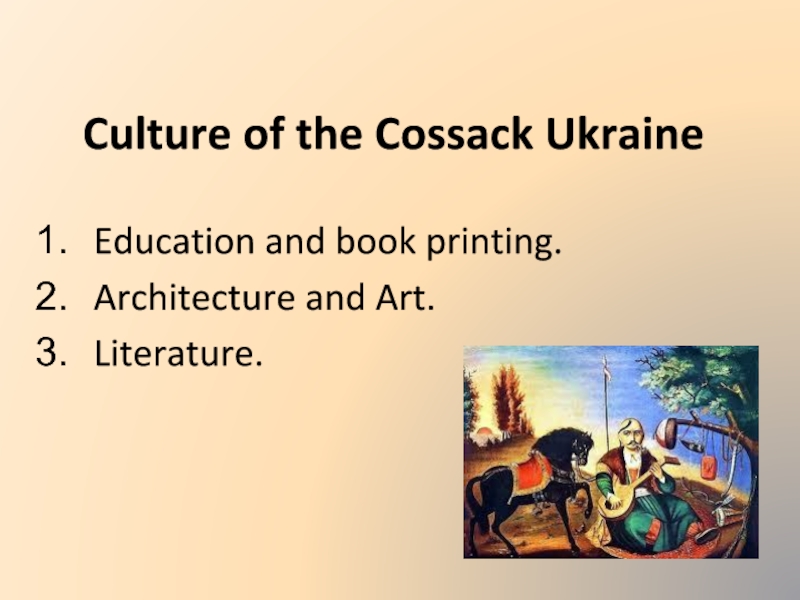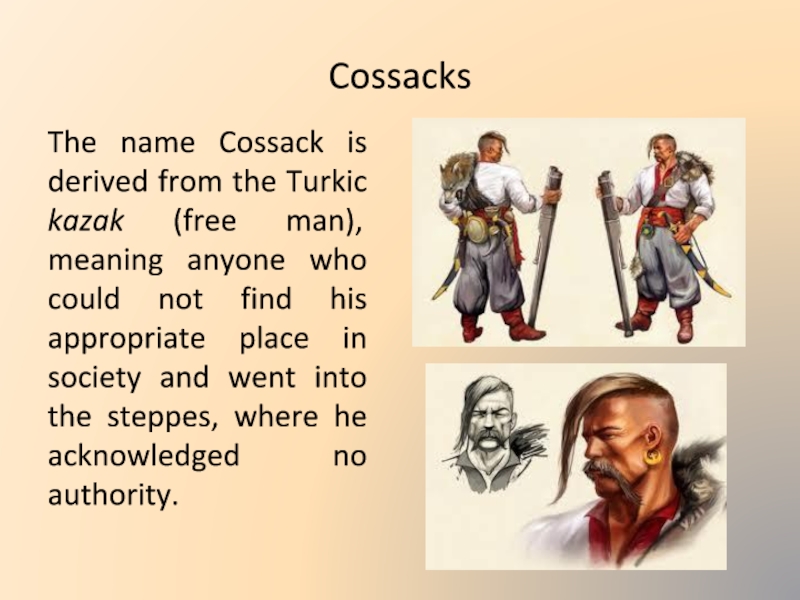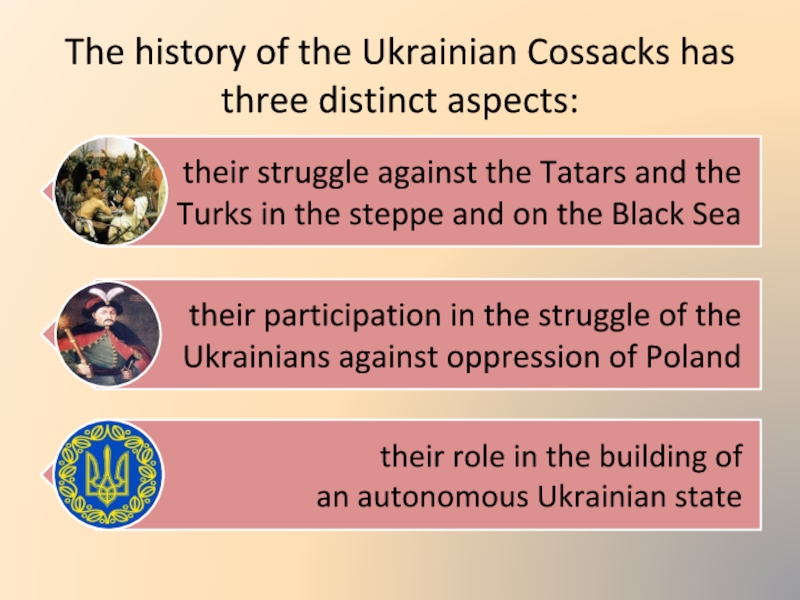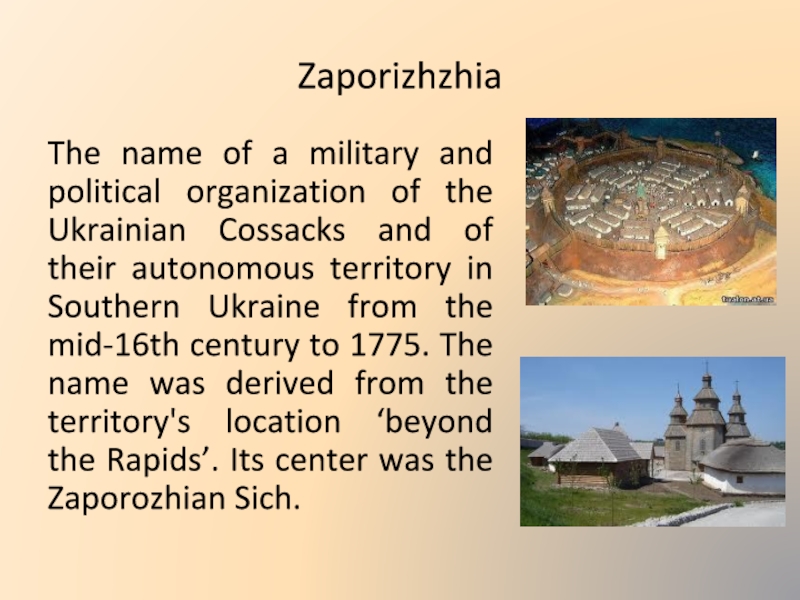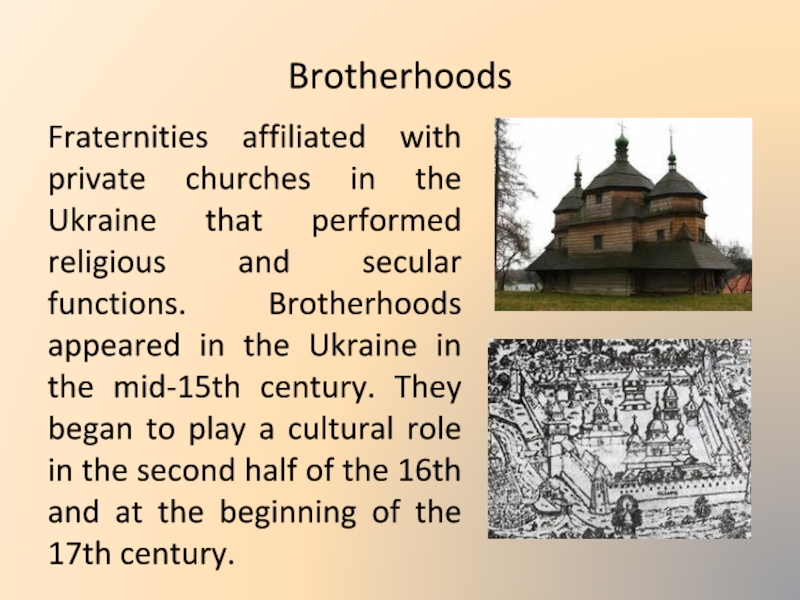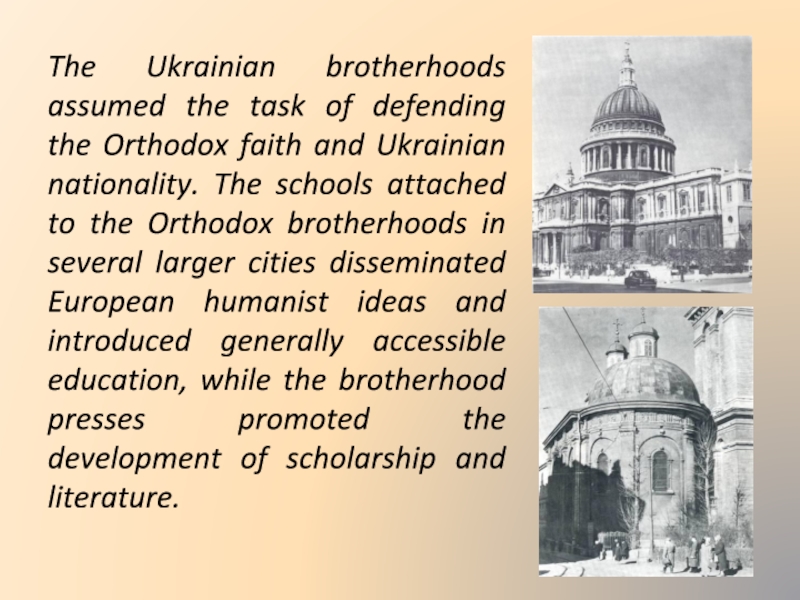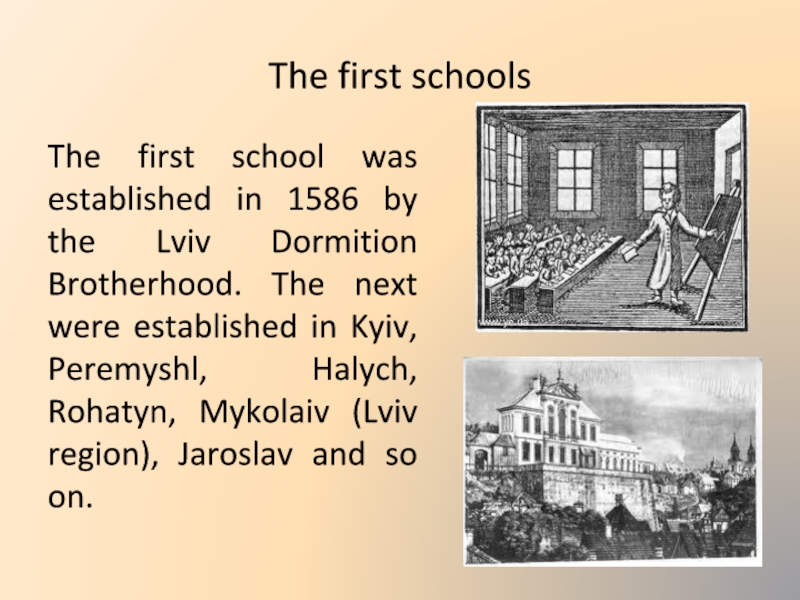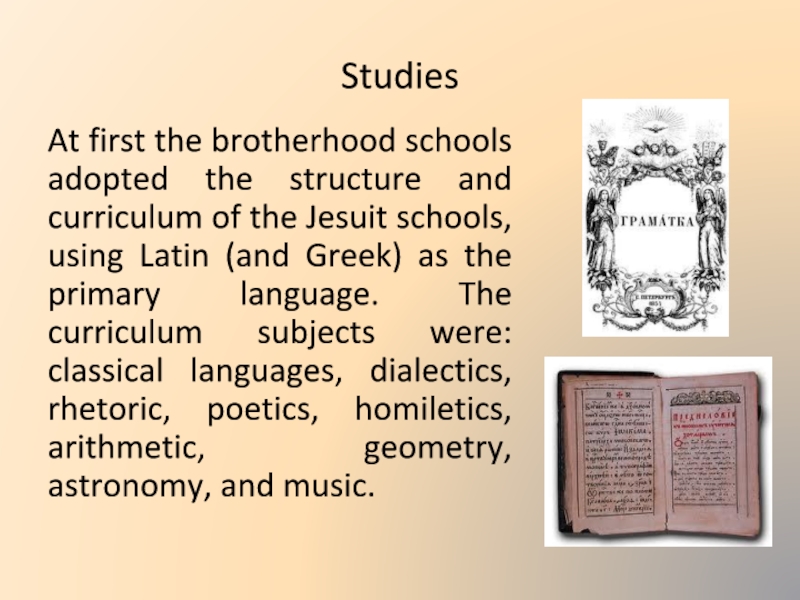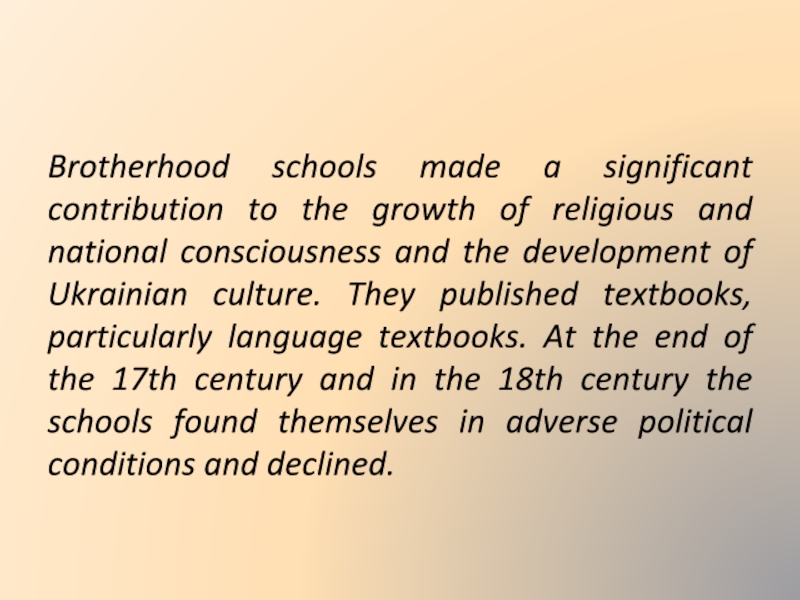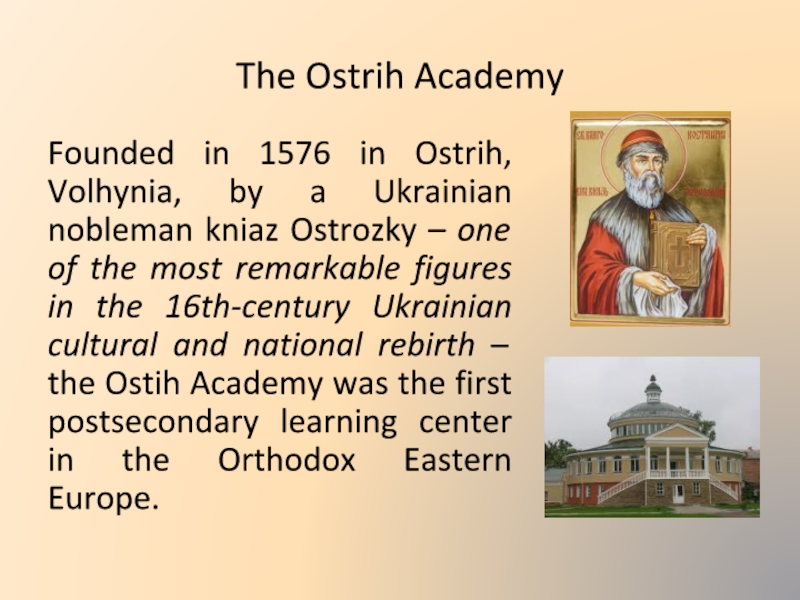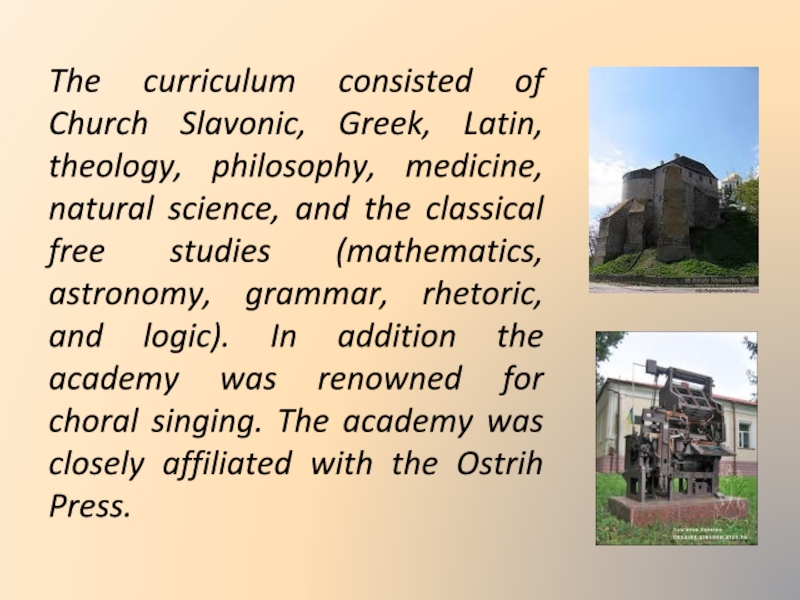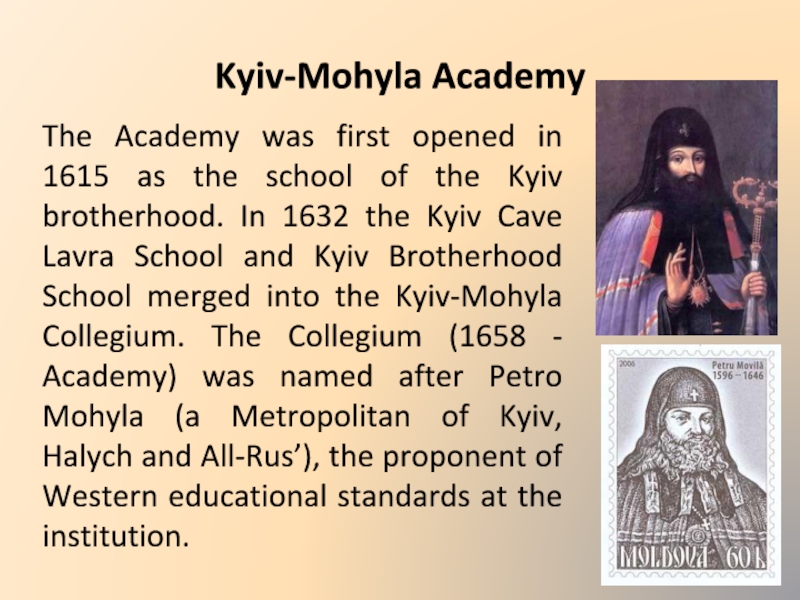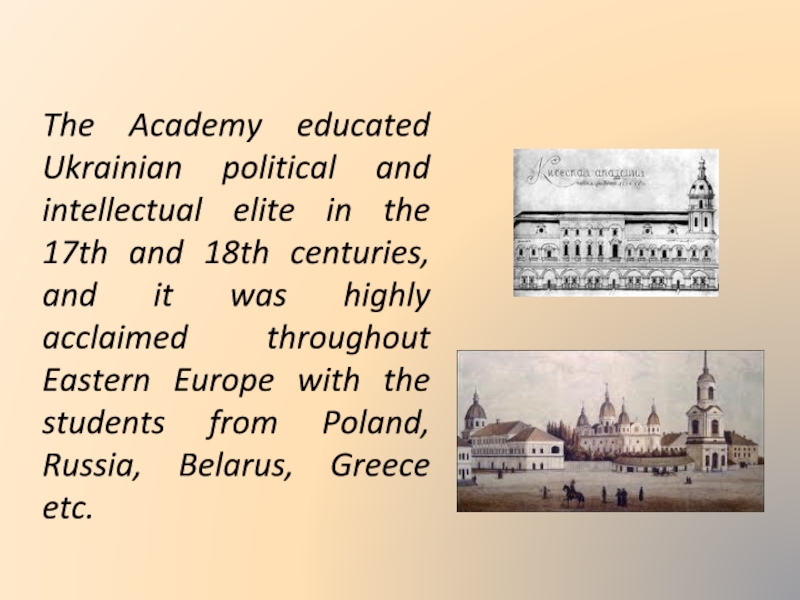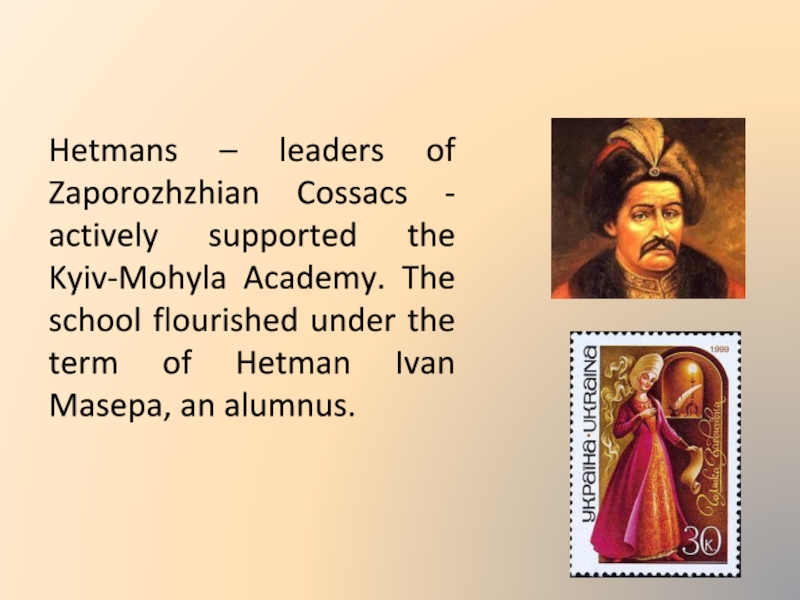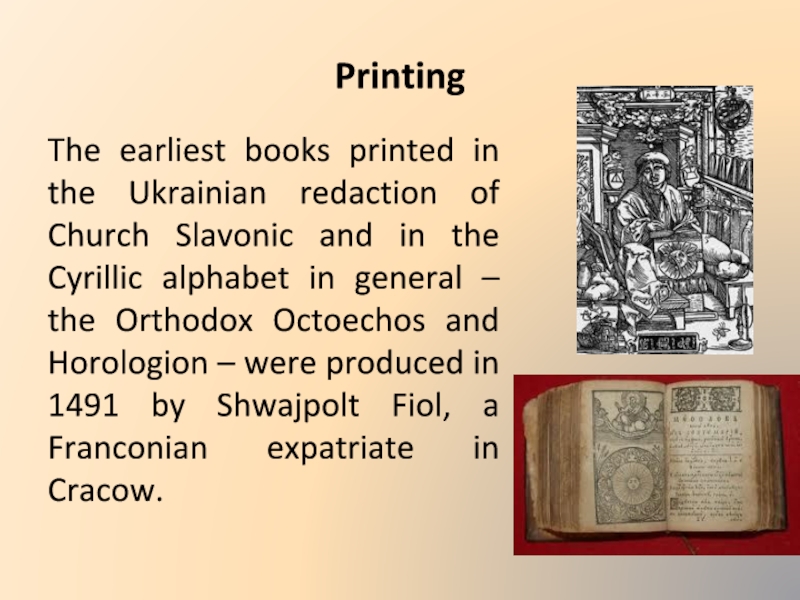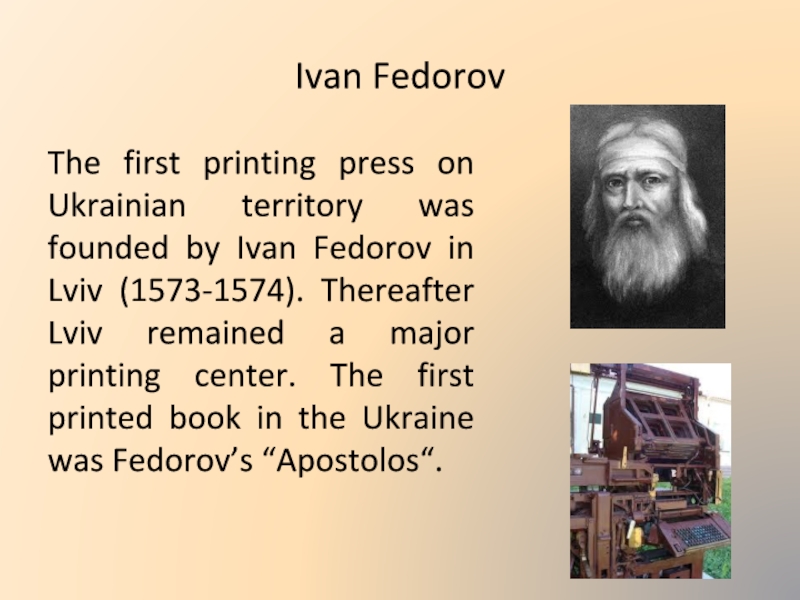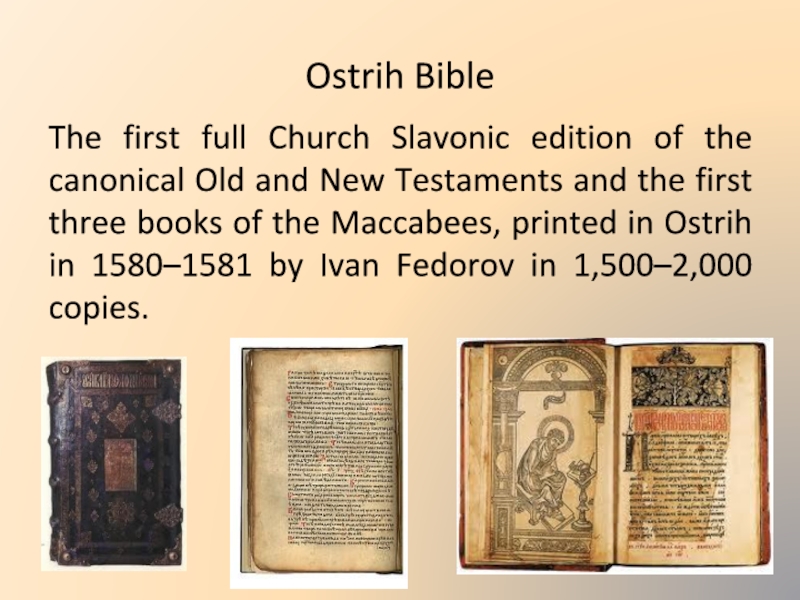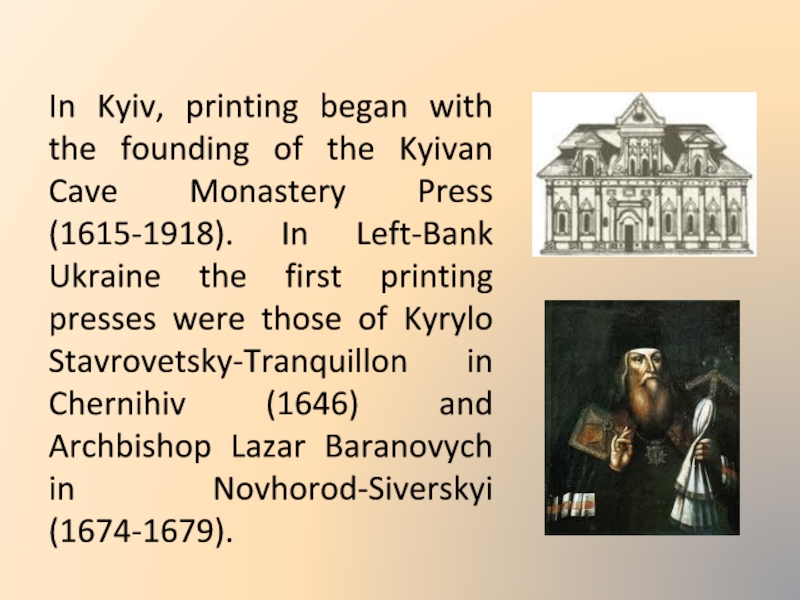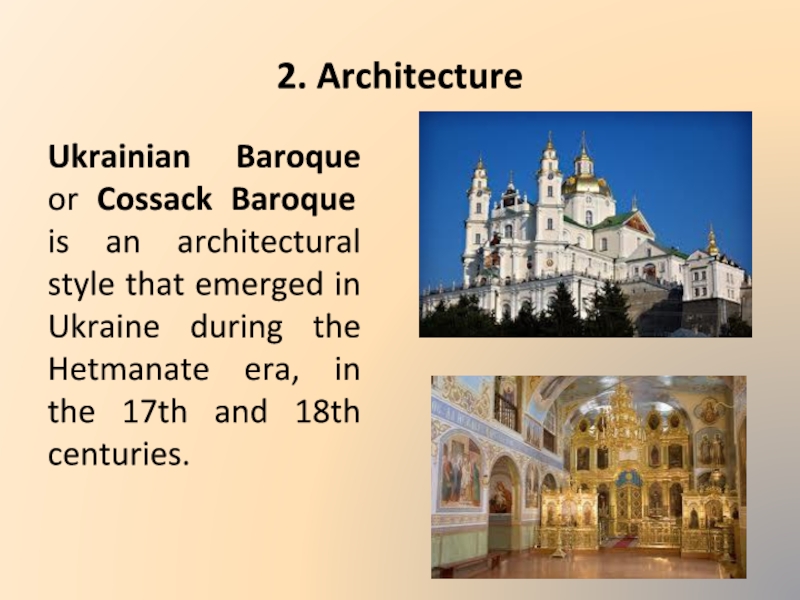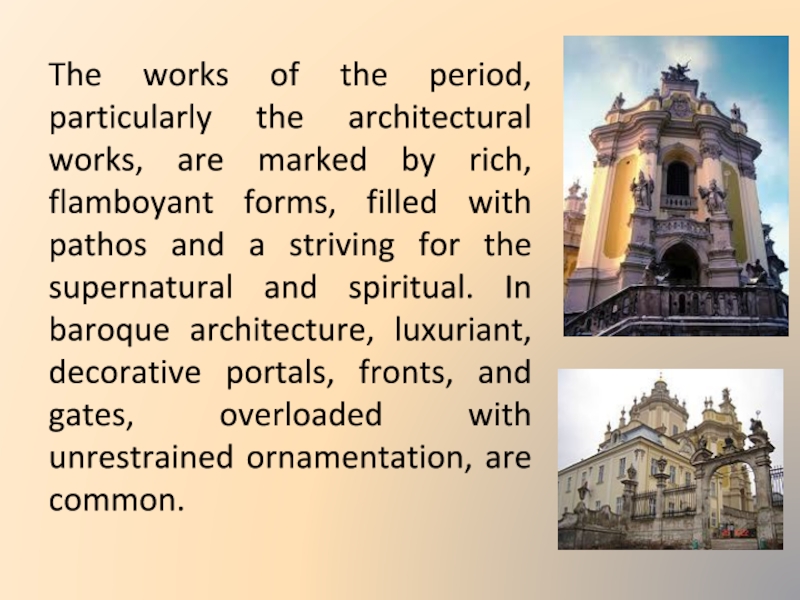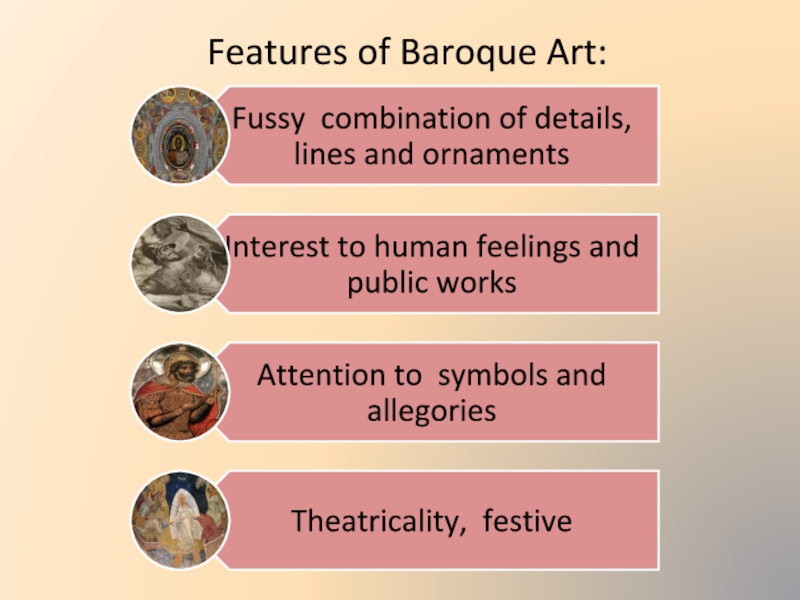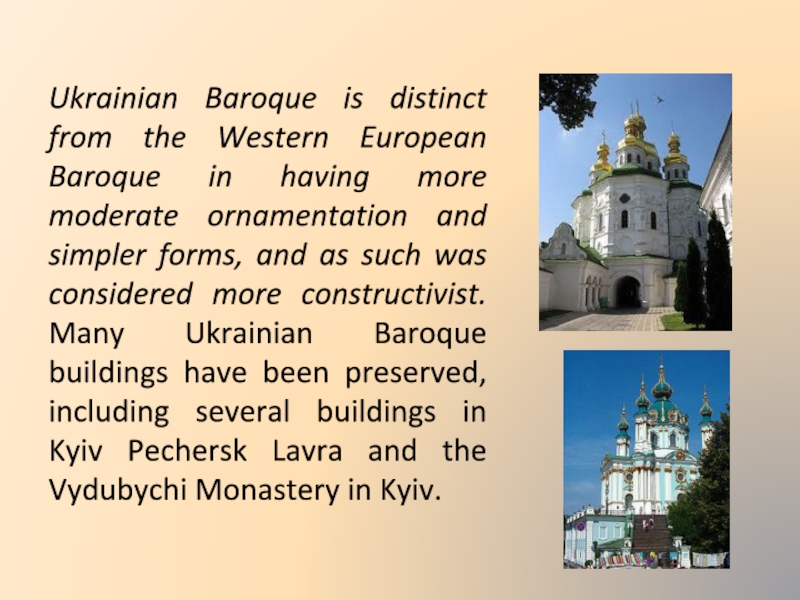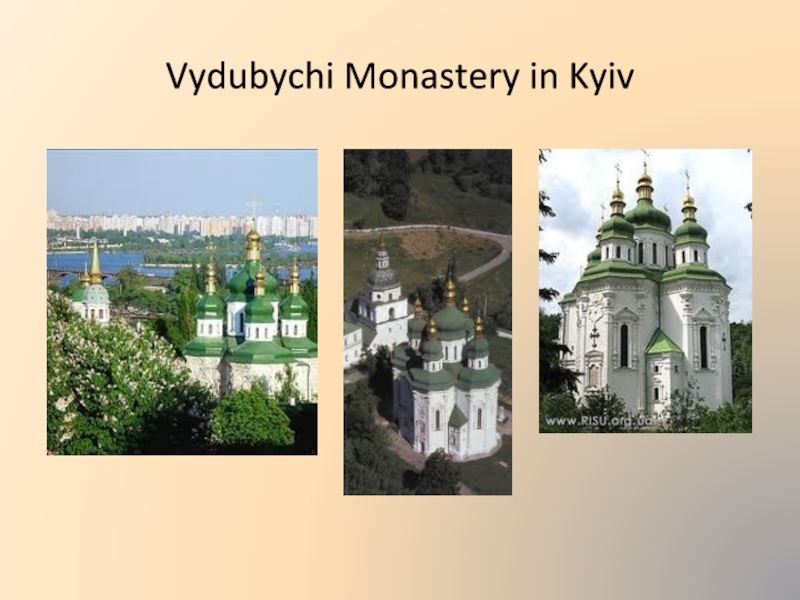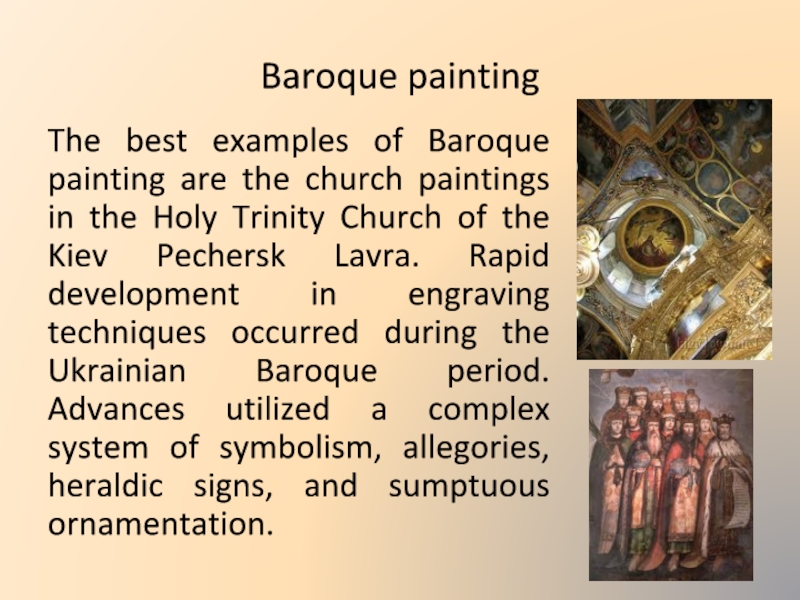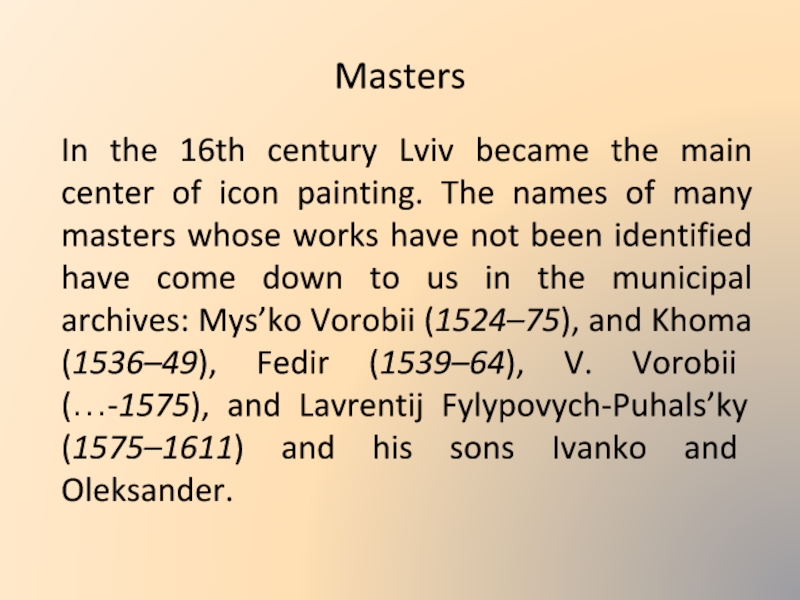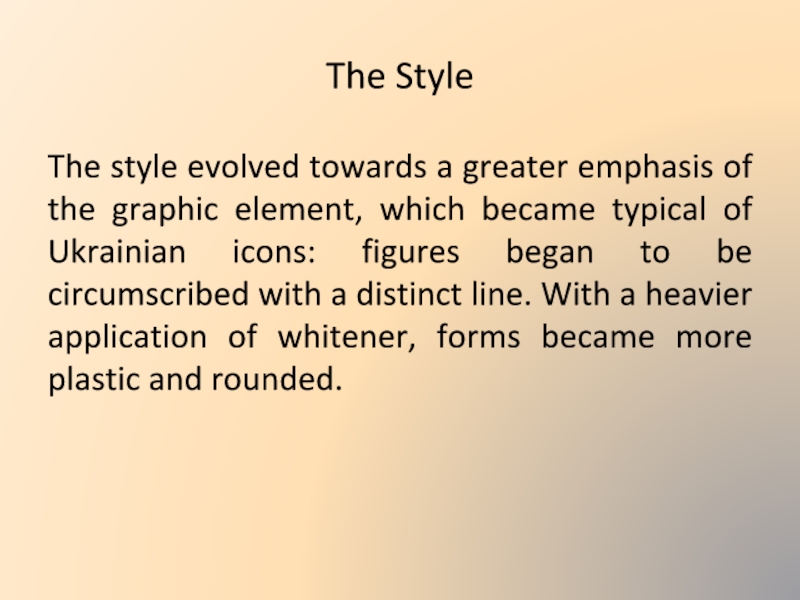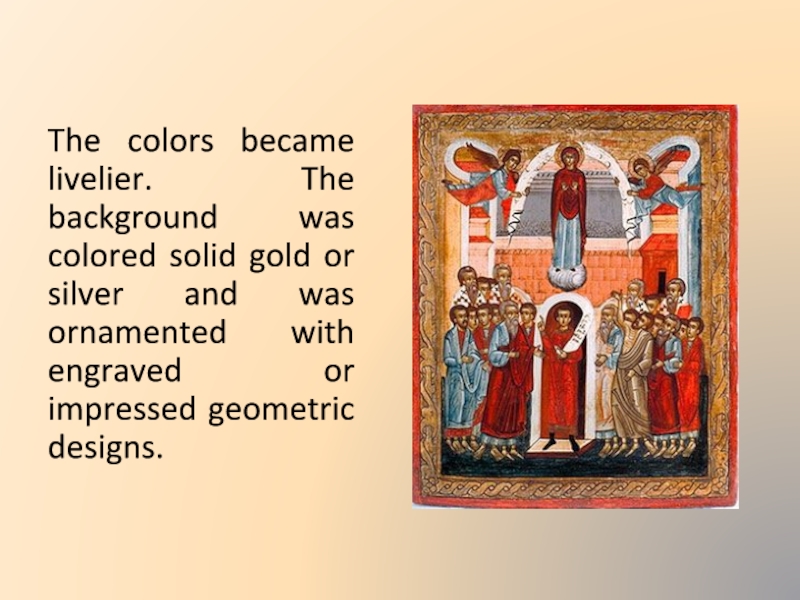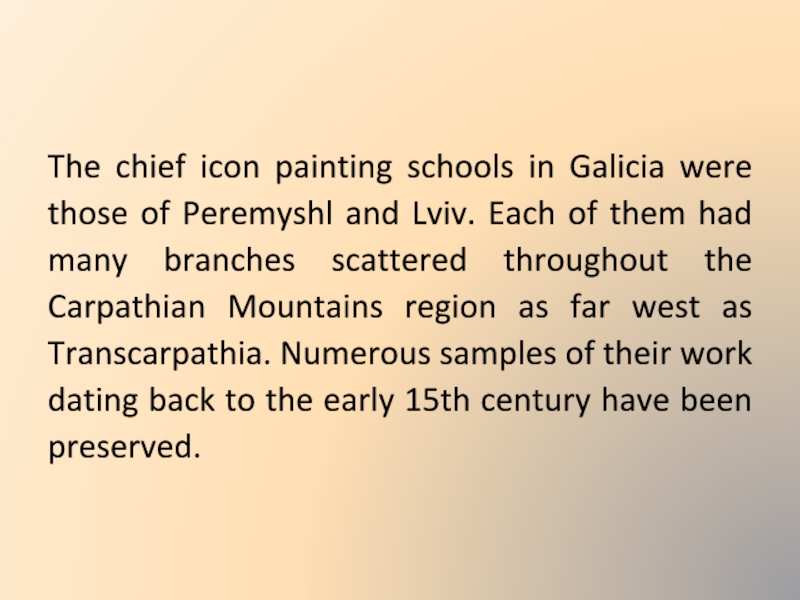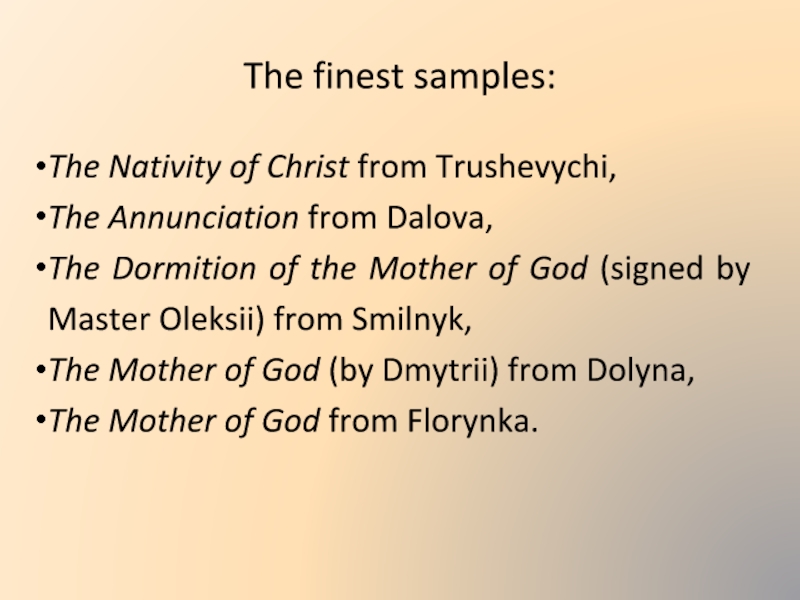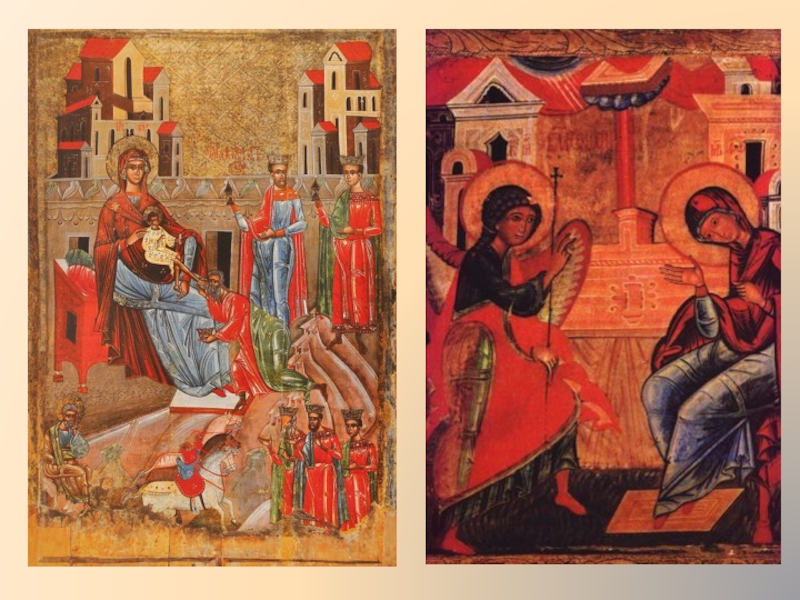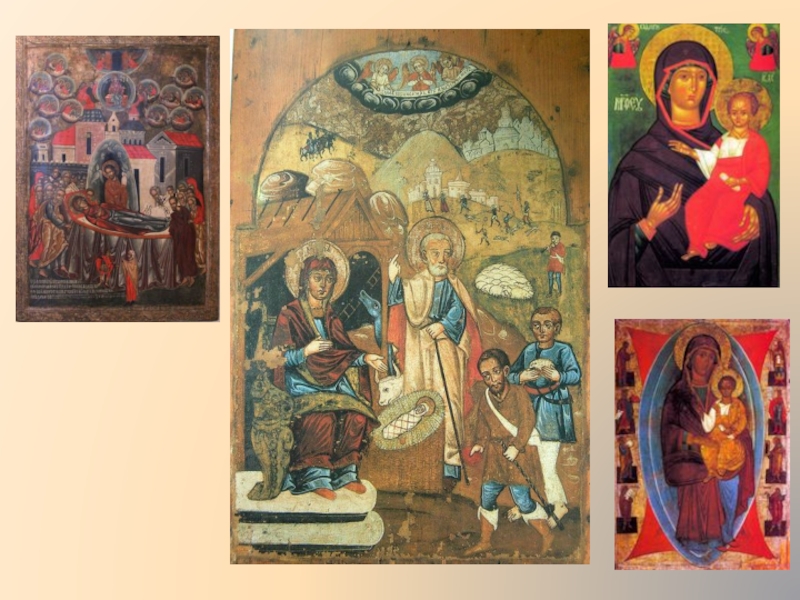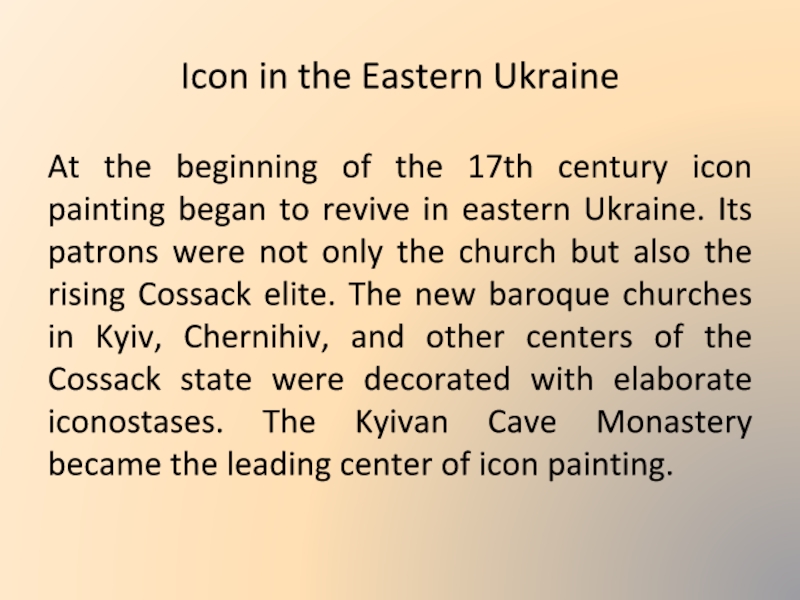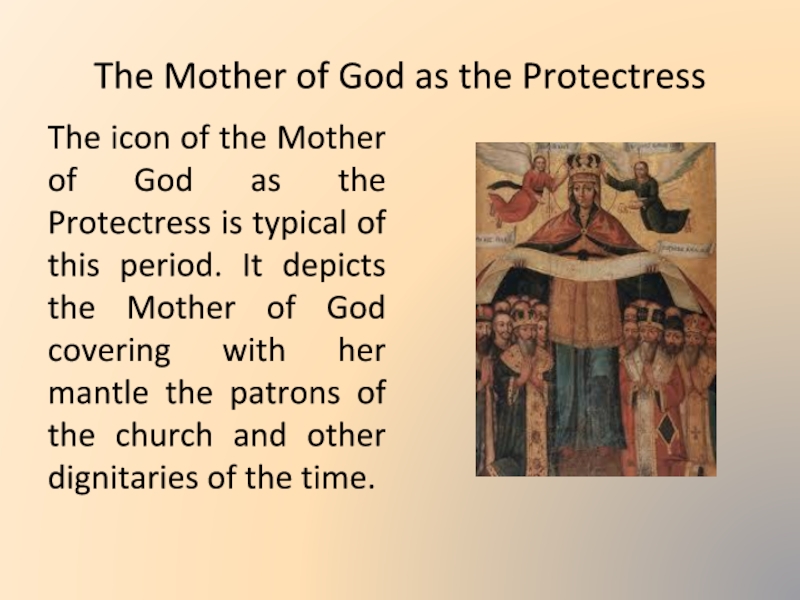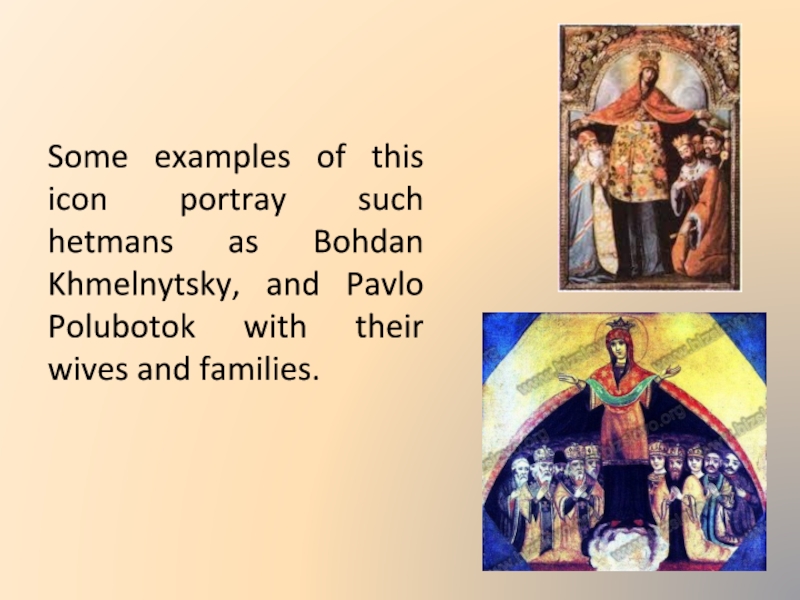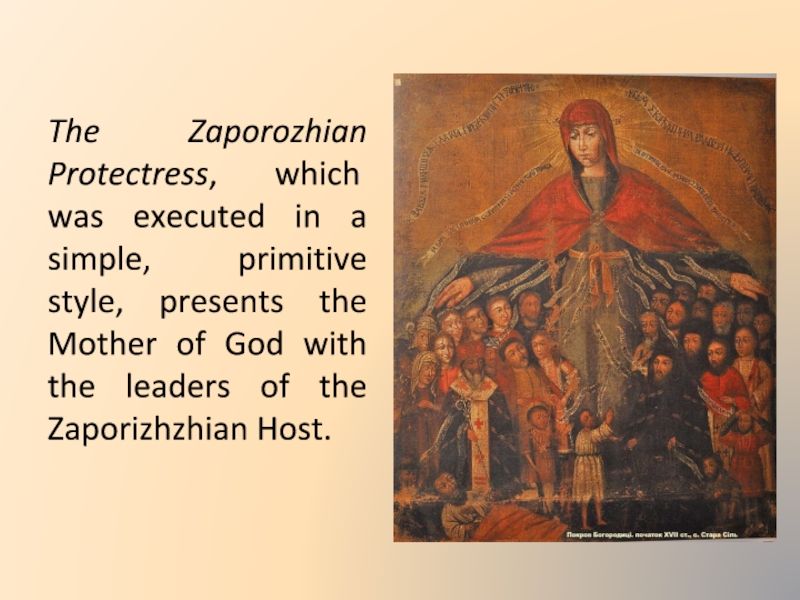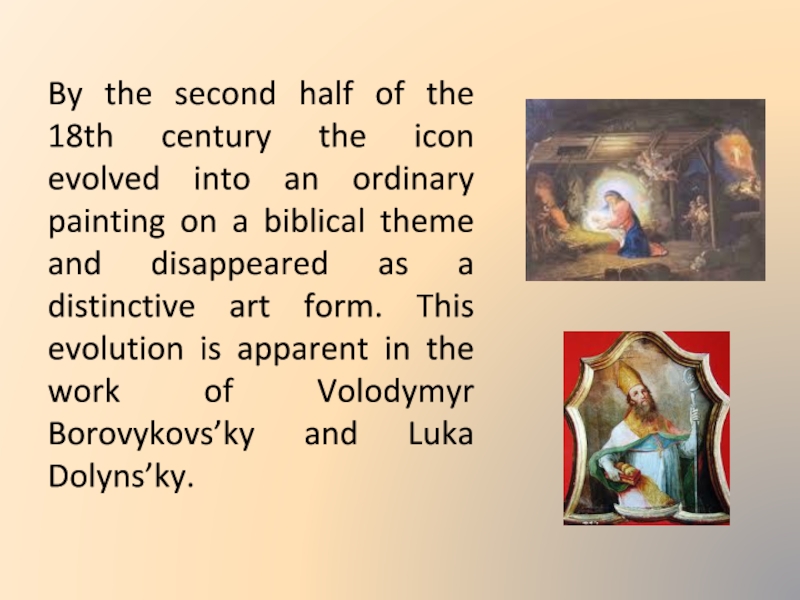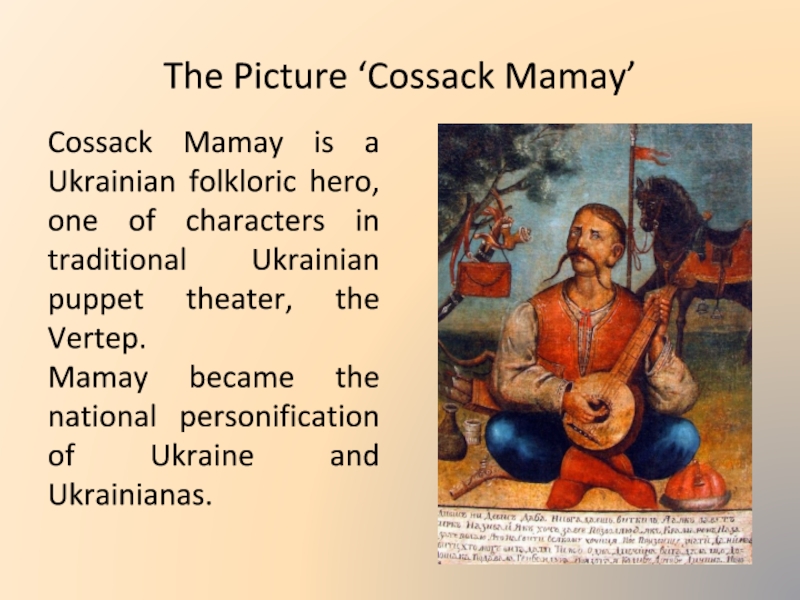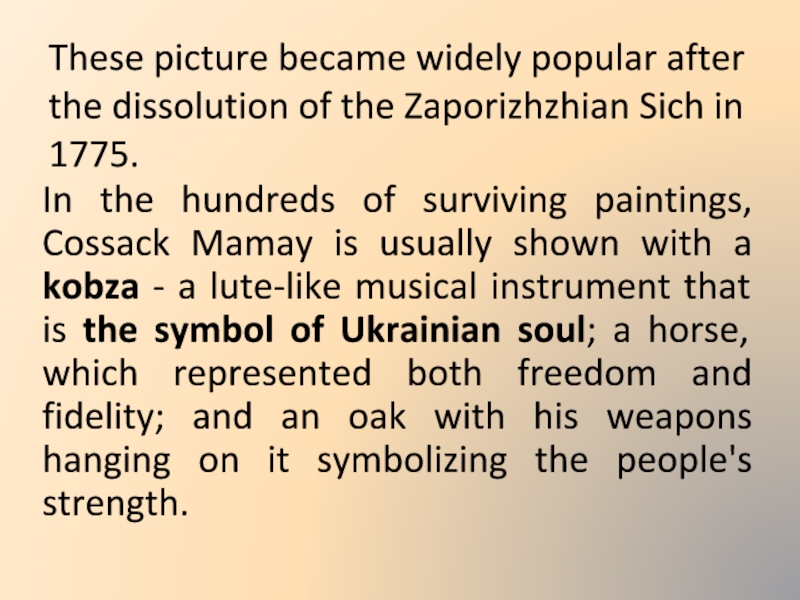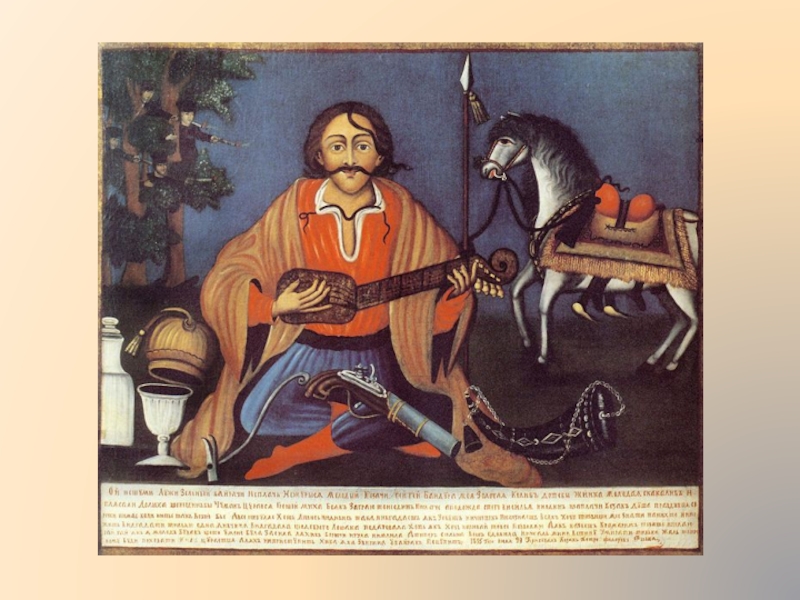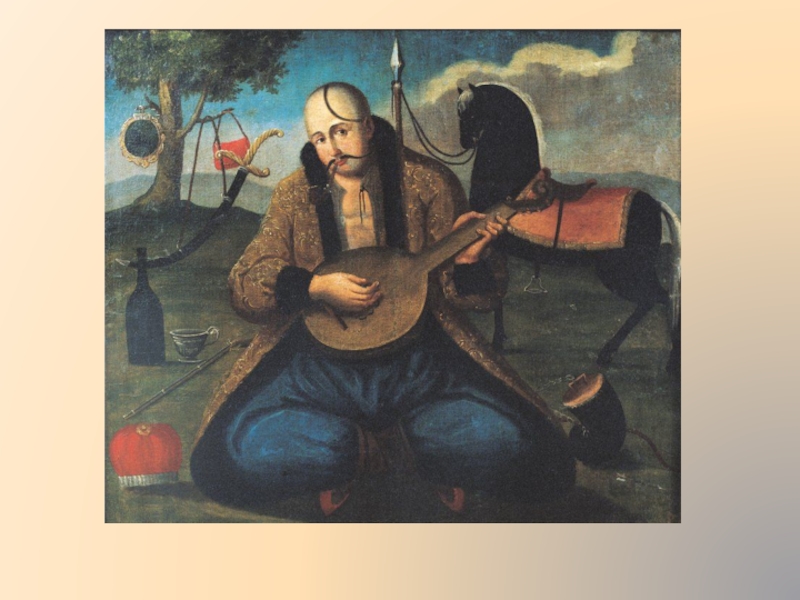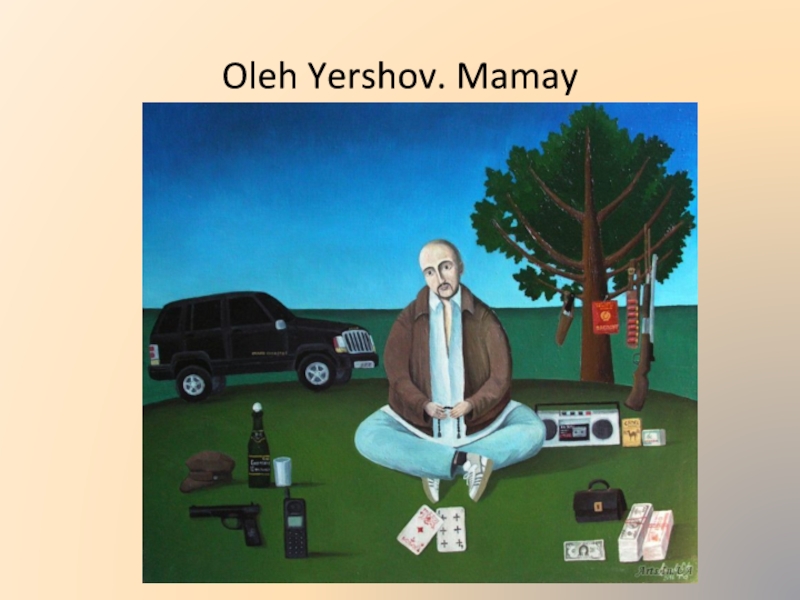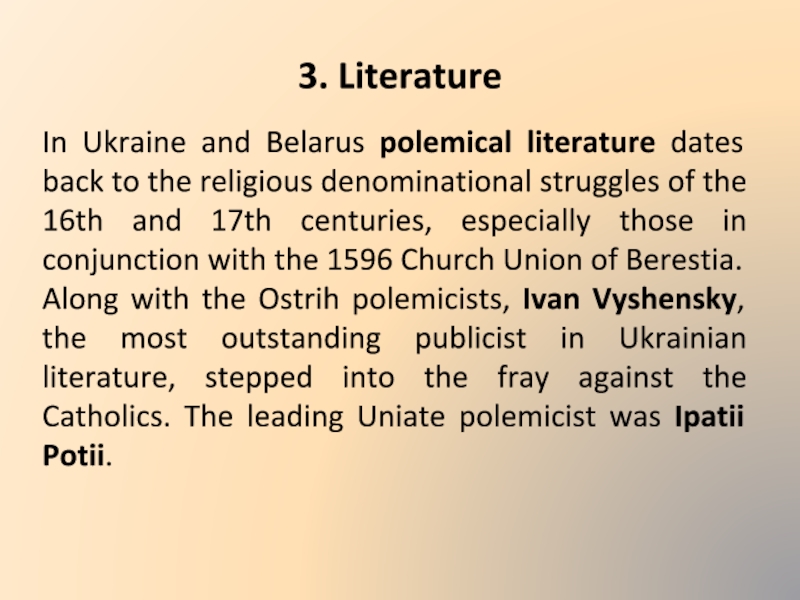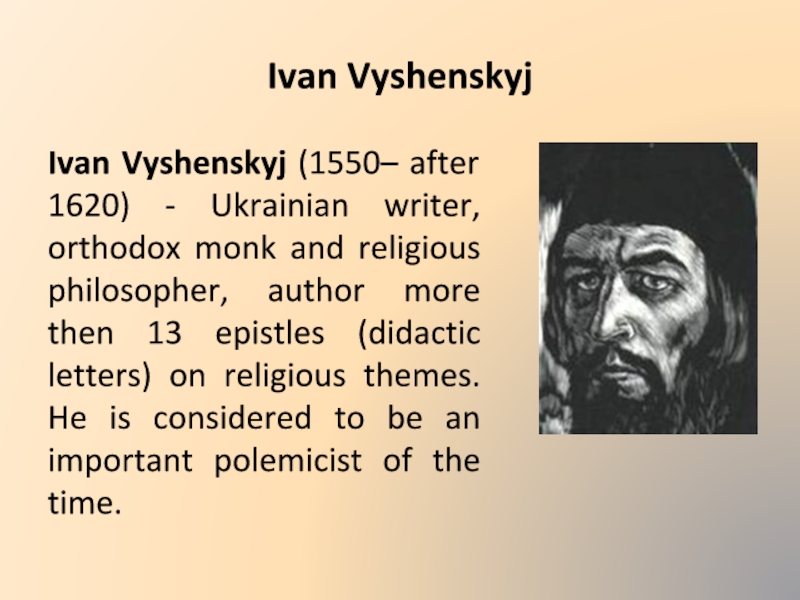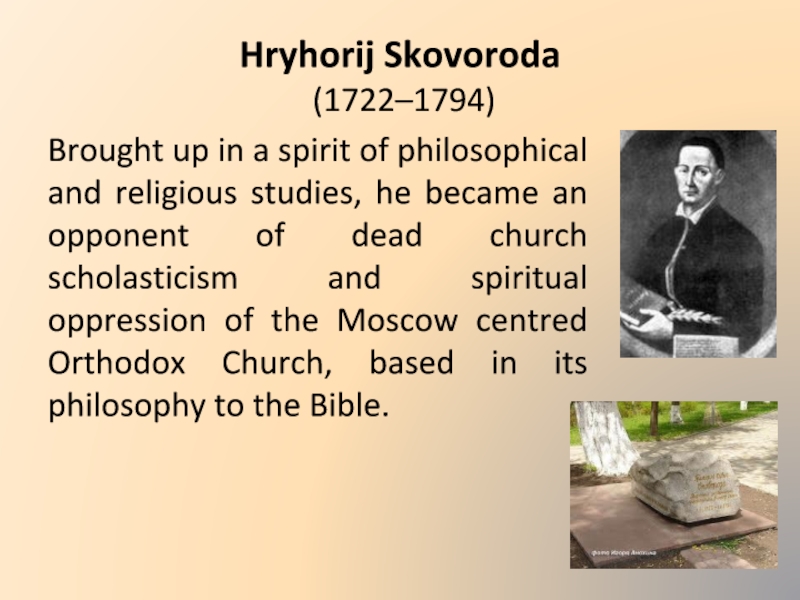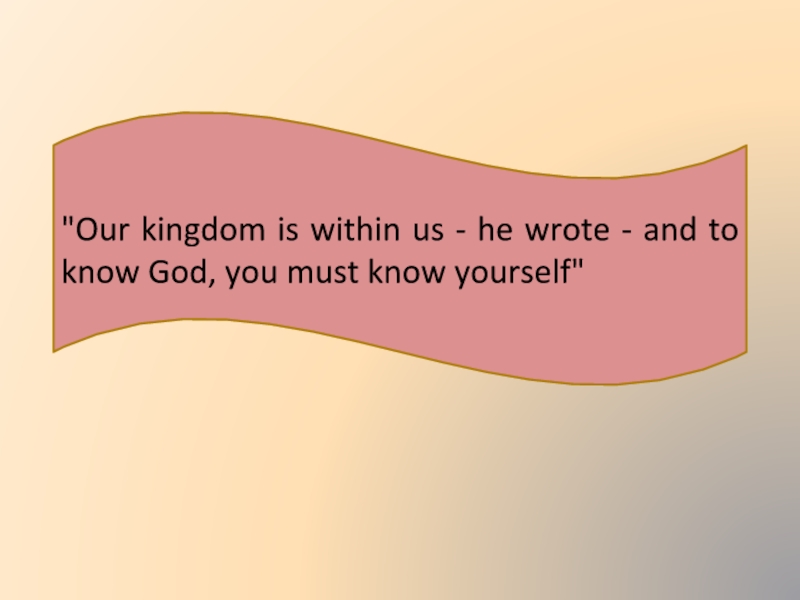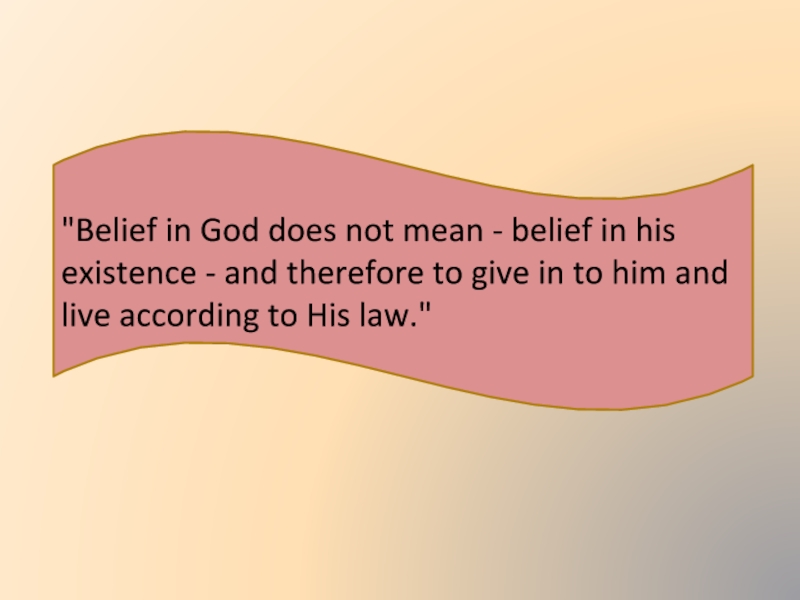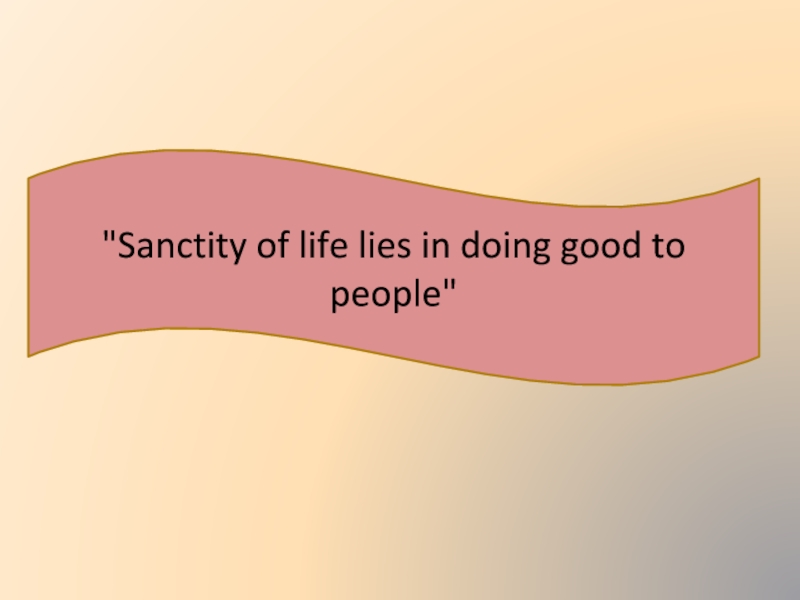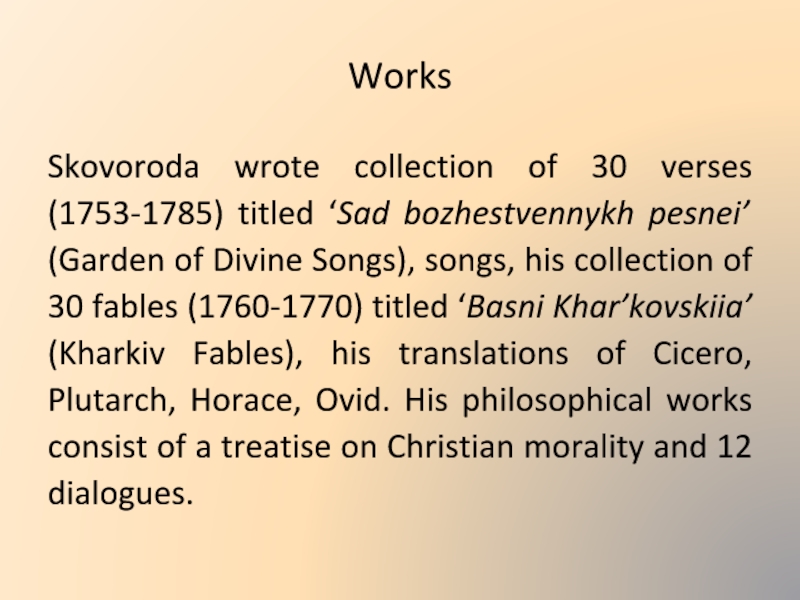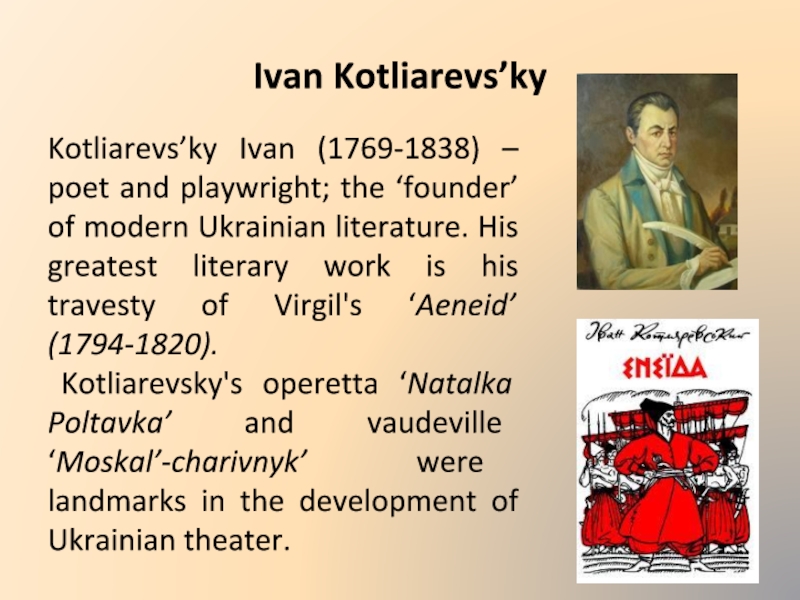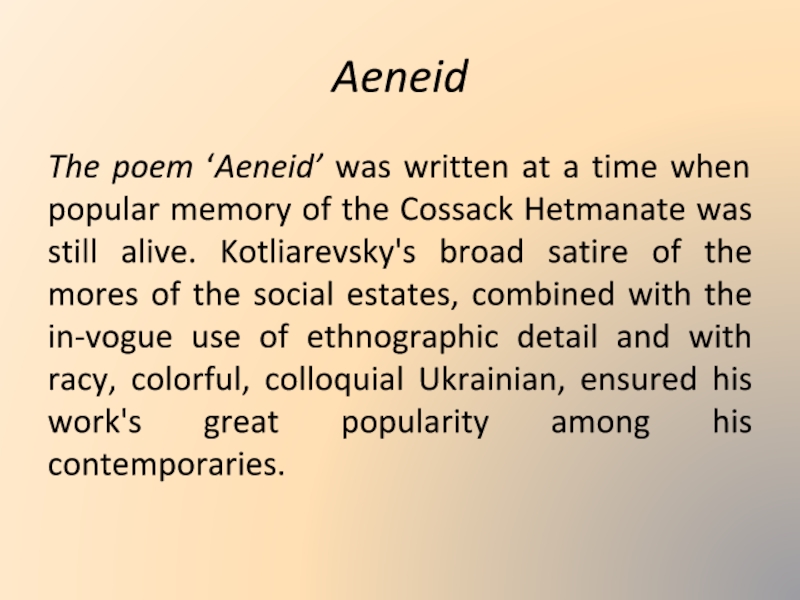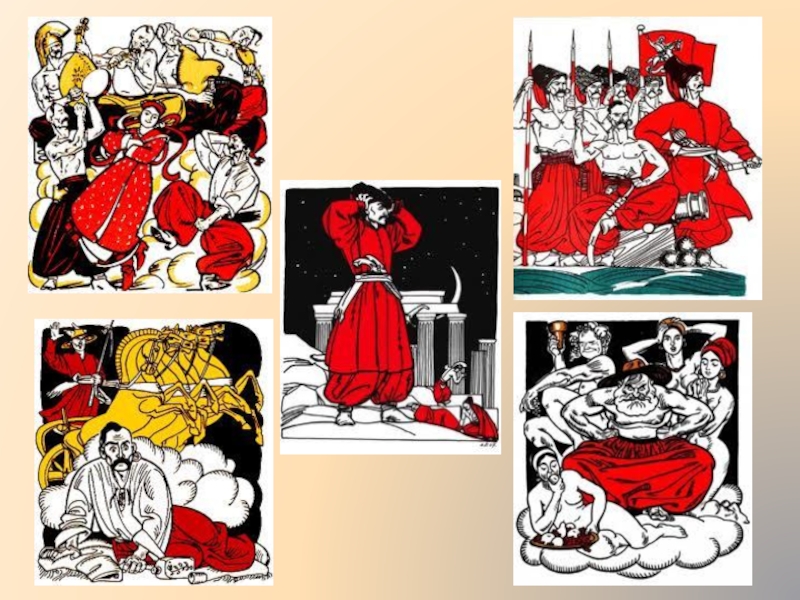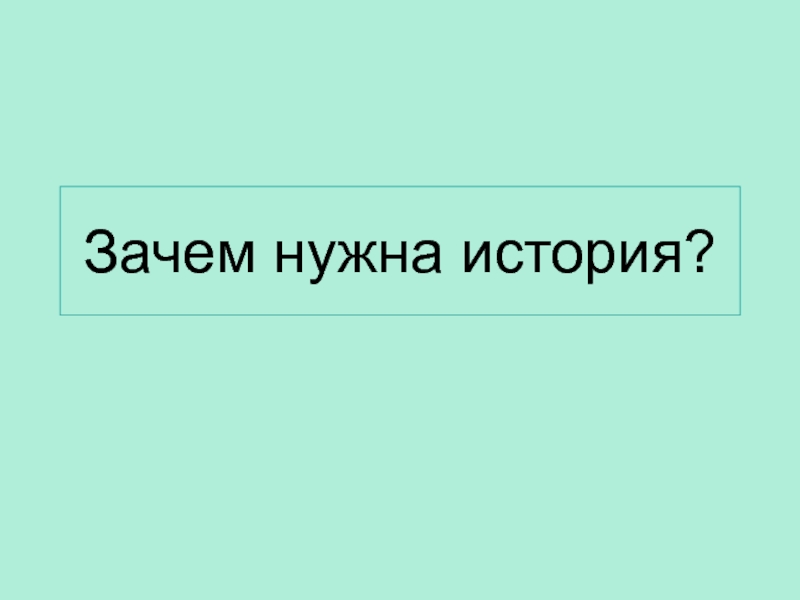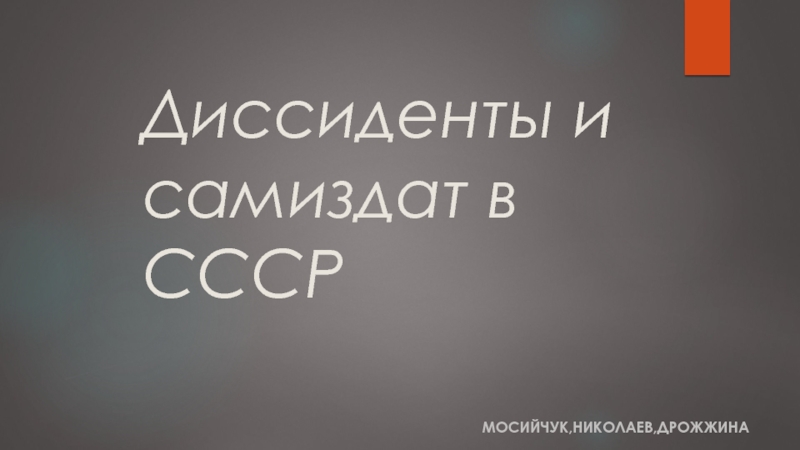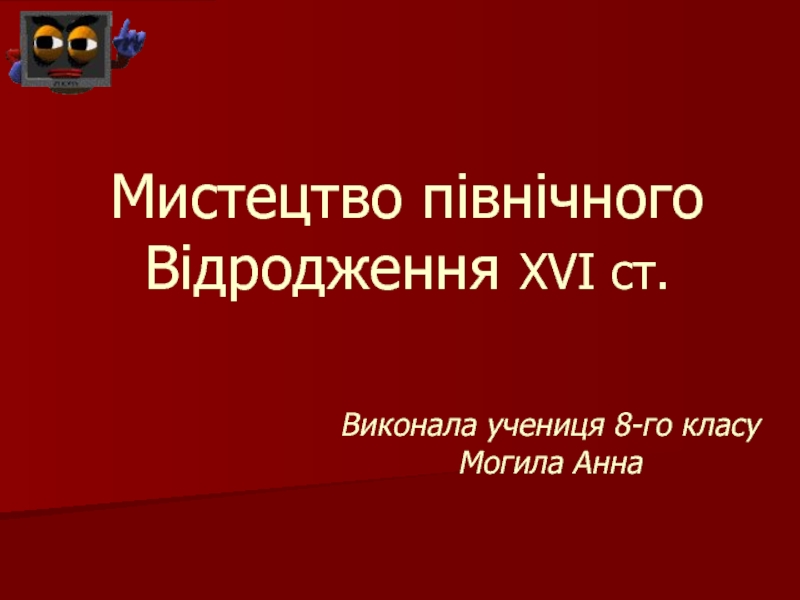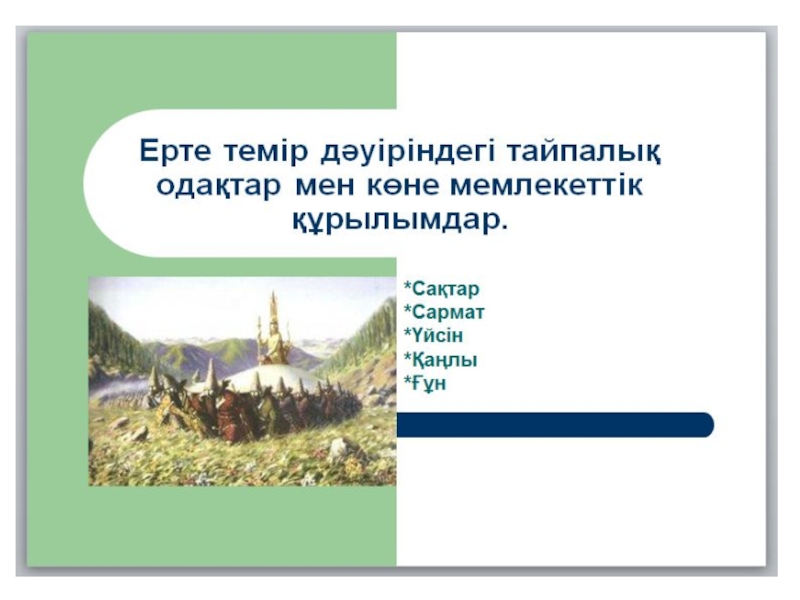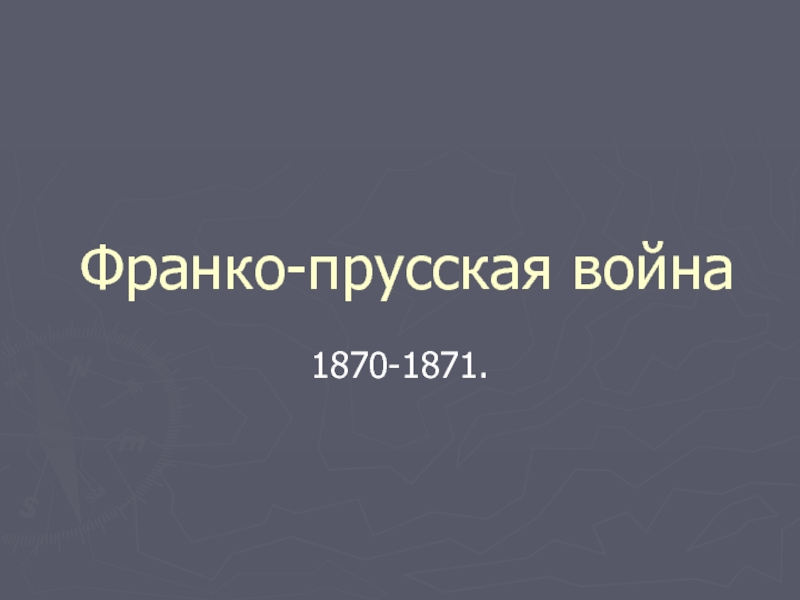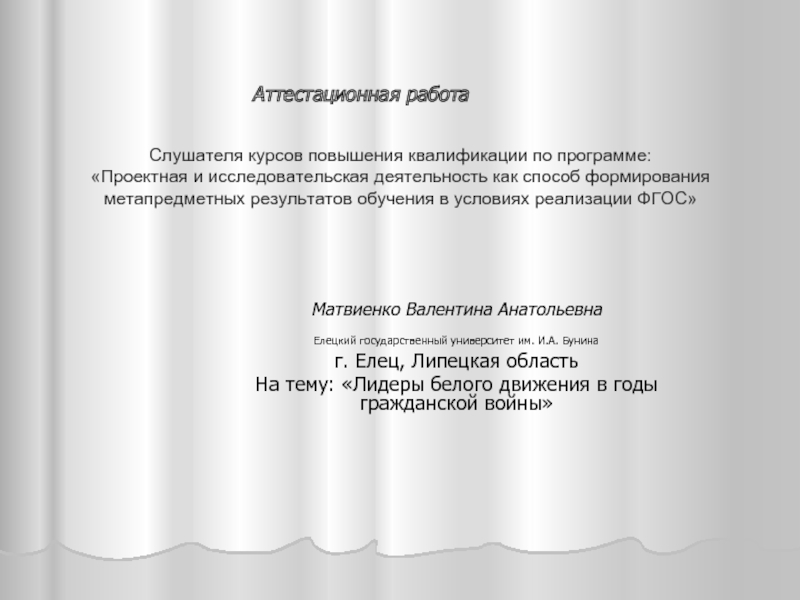- Главная
- Разное
- Дизайн
- Бизнес и предпринимательство
- Аналитика
- Образование
- Развлечения
- Красота и здоровье
- Финансы
- Государство
- Путешествия
- Спорт
- Недвижимость
- Армия
- Графика
- Культурология
- Еда и кулинария
- Лингвистика
- Английский язык
- Астрономия
- Алгебра
- Биология
- География
- Детские презентации
- Информатика
- История
- Литература
- Маркетинг
- Математика
- Медицина
- Менеджмент
- Музыка
- МХК
- Немецкий язык
- ОБЖ
- Обществознание
- Окружающий мир
- Педагогика
- Русский язык
- Технология
- Физика
- Философия
- Химия
- Шаблоны, картинки для презентаций
- Экология
- Экономика
- Юриспруденция
Culture of cossack Ukraine презентация
Содержание
- 1. Culture of cossack Ukraine
- 2. Cossacks The name Cossack is derived from
- 3. The history of the Ukrainian Cossacks has three distinct aspects:
- 4. Zaporizhzhia The name of a military and
- 5. Brotherhoods Fraternities affiliated with private churches in
- 6. The Ukrainian brotherhoods assumed the task
- 7. The first schools The first school was
- 8. Studies At first the brotherhood schools adopted
- 9. Brotherhood schools made a significant contribution
- 10. The Ostrih Academy Founded in 1576 in
- 11. The curriculum consisted of Church Slavonic,
- 12. Kyiv-Mohyla Academy The Academy was first opened
- 13. The Academy educated Ukrainian political and
- 14. Hetmans – leaders of Zaporozhzhian Cossacs
- 15. Printing The earliest books printed in the
- 16. Ivan Fedorov The first printing press on
- 17. Ostrih Bible The first full Church Slavonic
- 18. In Kyiv, printing began with the
- 19. 2. Architecture Ukrainian Baroque or Cossack Baroque
- 20. The works of the period, particularly
- 21. Features of Baroque Art:
- 22. Ukrainian Baroque is distinct from the
- 23. Vydubychi Monastery in Kyiv
- 24. Baroque painting The best examples of Baroque
- 25. Holy Trinity Church of the Kiev Pechersk Lavra
- 26. Icon The paint—an emulsion
- 27. Masters In the 16th century Lviv became
- 28. The Style The style evolved towards a
- 29. The colors became livelier. The background
- 30. The chief icon painting schools in
- 31. The finest samples: The Nativity of Christ
- 34. Icon in the Eastern Ukraine At the
- 36. The Mother of God as the Protectress
- 37. Some examples of this icon portray
- 38. The Zaporozhian Protectress, which was executed
- 39. By the second half of the
- 40. The Picture ‘Cossack Mamay’ Cossack Mamay is
- 41. These picture became widely popular after the
- 44. Oleh Yershov. Mamay
- 45. 3. Literature In Ukraine and Belarus polemical
- 46. Ivan Vyshenskyj Ivan Vyshenskyj (1550– after 1620)
- 47. Hryhorij Skovoroda (1722–1794) Brought up in
- 48. "Our kingdom is within us
- 49. "Belief in God does not
- 50. "Sanctity of life lies in doing good to people"
- 51. Works Skovoroda wrote collection of 30 verses
- 52. Ivan Kotliarevs’ky Kotliarevs’ky Ivan (1769-1838) – poet
- 53. Aeneid The poem ‘Aeneid’ was written at
Слайд 2Cossacks
The name Cossack is derived from the Turkic kazak (free man),
Слайд 4Zaporizhzhia
The name of a military and political organization of the Ukrainian
Слайд 5Brotherhoods
Fraternities affiliated with private churches in the Ukraine that performed religious
Слайд 6
The Ukrainian brotherhoods assumed the task of defending the Orthodox faith
Слайд 7The first schools
The first school was established in 1586 by the
Слайд 8Studies
At first the brotherhood schools adopted the structure and curriculum of
Слайд 9
Brotherhood schools made a significant contribution to the growth of religious
Слайд 10The Ostrih Academy
Founded in 1576 in Ostrih, Volhynia, by a Ukrainian
Слайд 11
The curriculum consisted of Church Slavonic, Greek, Latin, theology, philosophy, medicine,
Слайд 12Kyiv-Mohyla Academy
The Academy was first opened in 1615 as the school
Слайд 13
The Academy educated Ukrainian political and intellectual elite in the 17th
Слайд 14
Hetmans – leaders of Zaporozhzhian Cossacs - actively supported the Kyiv-Mohyla
Слайд 15Printing
The earliest books printed in the Ukrainian redaction of Church Slavonic
Слайд 16Ivan Fedorov
The first printing press on Ukrainian territory was founded by
Слайд 17Ostrih Bible
The first full Church Slavonic edition of the canonical Old
Слайд 18
In Kyiv, printing began with the founding of the Kyivan Cave
Слайд 192. Architecture
Ukrainian Baroque or Cossack Baroque is an architectural style that
Слайд 20
The works of the period, particularly the architectural works, are marked
Слайд 22
Ukrainian Baroque is distinct from the Western European Baroque in having
Слайд 24Baroque painting
The best examples of Baroque painting are the church paintings
Слайд 26Icon
The paint—an emulsion of mineral pigments, egg yolk, and water—is applied
An image depicting a holy personage or scene on a wooden panel
Слайд 27Masters
In the 16th century Lviv became the main center of icon
Слайд 28The Style
The style evolved towards a greater emphasis of the graphic
Слайд 29
The colors became livelier. The background was colored solid gold or
Слайд 30
The chief icon painting schools in Galicia were those of Peremyshl
Слайд 31The finest samples:
The Nativity of Christ from Trushevychi,
The Annunciation from
The Dormition of the Mother of God (signed by Master Oleksii) from Smilnyk,
The Mother of God (by Dmytrii) from Dolyna,
The Mother of God from Florynka.
Слайд 34Icon in the Eastern Ukraine
At the beginning of the 17th century
Слайд 36The Mother of God as the Protectress
The icon of the Mother
Слайд 37
Some examples of this icon portray such hetmans as Bohdan Khmelnytsky,
Слайд 38
The Zaporozhian Protectress, which was executed in a simple, primitive style,
Слайд 39
By the second half of the 18th century the icon evolved
Слайд 40The Picture ‘Cossack Mamay’
Cossack Mamay is a Ukrainian folkloric hero, one
Mamay became the national personification of Ukraine and Ukrainianas.
Слайд 41These picture became widely popular after the dissolution of the Zaporizhzhian
In the hundreds of surviving paintings, Cossack Mamay is usually shown with a kobza - a lute-like musical instrument that is the symbol of Ukrainian soul; a horse, which represented both freedom and fidelity; and an oak with his weapons hanging on it symbolizing the people's strength.
Слайд 453. Literature
In Ukraine and Belarus polemical literature dates back to the
Along with the Ostrih polemicists, Ivan Vyshensky, the most outstanding publicist in Ukrainian literature, stepped into the fray against the Catholics. The leading Uniate polemicist was Ipatii Potii.
Слайд 46Ivan Vyshenskyj
Ivan Vyshenskyj (1550– after 1620) - Ukrainian writer, orthodox monk
Слайд 47Hryhorij Skovoroda
(1722–1794)
Brought up in a spirit of philosophical and religious
Слайд 49
"Belief in God does not mean - belief in his existence
Слайд 51Works
Skovoroda wrote collection of 30 verses (1753-1785) titled ‘Sad bozhestvennykh pesnei’
Слайд 52Ivan Kotliarevs’ky
Kotliarevs’ky Ivan (1769-1838) – poet and playwright; the ‘founder’ of
Kotliarevsky's operetta ‘Natalka Poltavka’ and vaudeville ‘Moskal’-charivnyk’ were landmarks in the development of Ukrainian theater.
